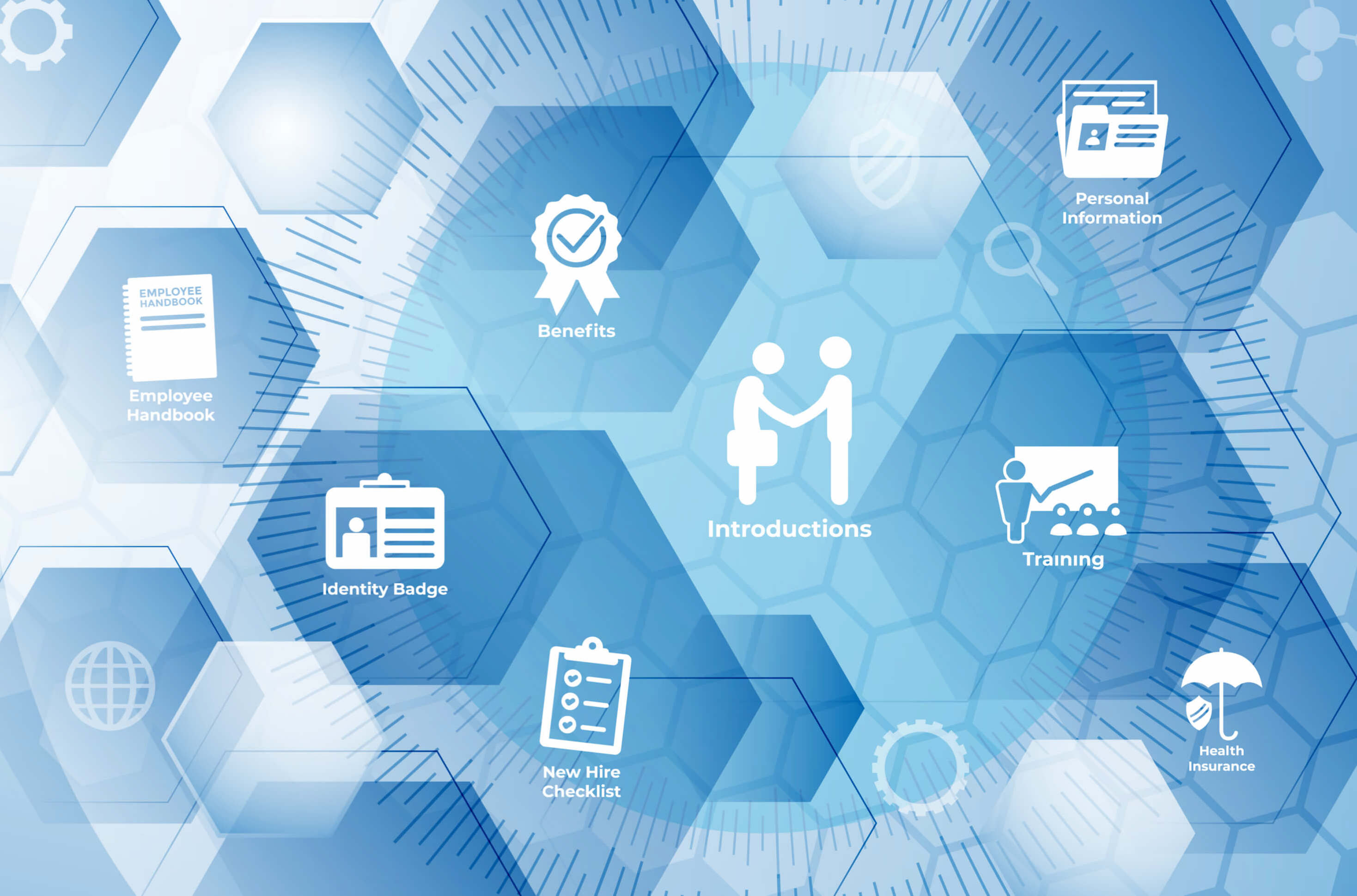
In an era of upheaval and rapid change, remote employee onboarding processes need to be constantly refined.
Employee onboarding processes were dramatically transformed in 2020. When Covid-19 mitigation measures kicked in, HR departments all over the world had to adapt rapidly to remote onboarding. Yet our straw poll of HR professionals at the time showed that they expected to return to pre-Covid onboarding arrangements within months.
While they had been yearning for “normal” at that point, today, various surveys show that more have accepted the new normal of remote employee onboarding and expect it to continue for some time yet. Many have also digitised everything from employment contracts and forms, to employee handbooks.
In cities where the virus has been successfully contained, more companies have returned to conducting onboarding in-person.
However, in either scenario (remote or in-person), the process needs to be updated considering employees’ continuing concerns over health and job security.
Especially in this era of upheaval and rapid change, new employees would appreciate efforts to help them feel at home and settle in as quickly as possible.
WHY ONBOARDING MATTERS NOW MORE THAN EVER
Onboarding is an integral part of the employee experience and is one of the most important investments for any business. Employees who report positive onboarding experiences tend to be more engaged, are more productive and stay at the company longer than others. Mercer’s 2020 Global Talent Trends Study shows that energised employees are also more resilient and more ready to reskill – all vital to helping businesses succeed in the Covid and post-Covid reality.
You might think that in an employer’s market, you don’t really have to go the extra mile to ensure a positive employee experience. Think again. While there many professionals available, attracting and retaining top talent – the right talent for your needs – will always take some effort as these individuals will likely have options in spite of prevailing economic conditions.
Companies also need to think long-term. Being known for dismal employee onboarding processes could tarnish your employer brand, preventing you from attracting top talent in the future.
UPDATE BOTH IN-PERSON AND REMOTE ONBOARDING PROCESSES
Safety and Physical and Mental Health
HR leaders are increasingly prioritising safety, and physical and mental health as pandemic concerns continue. Comprehensively brief new employees on the health and safety measures that the company is taking. Inform employees whether you’ll be providing masks, gloves and other protective equipment. If you’re not able to provide these, be prepared to explain why.
You’ll also want to ensure that you’ve explained Covid-related measures your new hires are expected to adhere to – from sanitation mandates to disclosing contact with Covid-positive individuals.
Many companies have also implemented physical and mental health programmes to support employees through this challenging period. Highlight these to your new hires from the start, and if possible, during the pre-boarding process. It’ll show you to be a caring organisation and make them feel positive about working with you.
Update Your Employee Handbook
Most employees receive a physical handbook as part of their onboarding process. Since Covid-19, many companies have digitised theirs in light of rising remote hiring and onboarding. Aside from the fact that soft copies are more easily disseminated than hard copies, they are also more easily updated.
Make sure you update key information such as Covid-related initiatives. Having an outdated handbook only causes confusion and indicates you’re disorganised.
Formalise Basic Processes
Whether the new hire will be working on site or remotely, formalise processes such as sending out team or company-wide e-mails on people’s first days. Now, more than ever, they need to feel welcomed by existing employees. Current employees would also then know to look out for a new colleague who might need help settling in.
Set a Clear Agenda
A comprehensive agenda that includes introductory meets-and-greets with the immediate team, leadership and business units within your company is vital. Make them feel like they’re part of the team from the start by coordinating team interactions for both remote and on-site employees.
REMOTE ONBOARDING
Pre-boarding: Equip your Employees
Even before the employee’s first day of work, employers must ensure that the employee has all the equipment they need for a great first day.
These should be delivered at least a week in advance together with the necessary manuals and guides. This gives the employee time to try out the equipment should they choose to. At the very least, it gives them a sense of security in knowing that they have what they need for their first day of work.
Institute a Buddy System
When your interaction is chiefly remote and virtual, it becomes harder to spot employees who fall through the cracks. A person who is being onboarded remotely doesn’t have the luxury of turning to the person next to him/her to ask a question.
Having a buddy system in place is especially vital during this period to ensure remote employees have someone to lean on.
Don’t Over-do Remote Meetings
If you’re thinking of hosting a day-long Zoom call with new hires, think again. This can be exhausting for both the employee and their managers. Instead, schedule short bite-sized video conference sessions and complement these with “quiet time” during which employees can choose to merely digest the information imparted during the video conference or refer to other types of material such as digital handbooks and/or videos. Video conference time could be chiefly dedicated to Q&A sessions to elucidate information and address employee concerns.
Remember to carve out time for breaks.
Use Digital Assets to Communicate
Don’t just rely on the employee handbook or virtual meetings. To explain policies or processes, invest in creating quality videos involving staff who are great communicators. Feel free to incorporate humour and entertainment value. The human element will help employees feel they are part of a living, breathing organisation. These digital assets also make onboarding more efficient as they can be used over and over again.
Regular Check-ins by Managers
Schedule regular check-ins with new employees to ensure they understand their role and responsibilities. Managers must go the extra mile to make themselves available to answer any questions and offer support when needed. Don’t over-do this though. Time alone to allow the new hire to digest new information is vital. Schedule one session a day, but let them know they can come to you when needed.
Don’t Forget the Personal Touch
Remote employees deserve a personal touch as much as, if not more than on-site employees. Send a welcome gift to their home on their first day. It could be something as simple as a wholesome lunch.
Get Feedback
Surveys can reveal a lot of information. At the mid-point and end of the onboarding process, ask new hires questions such as whether they felt welcomed, what would have made their experience better, and which elements of the onboarding experience were most positive or least positive.
This feedback is particularly useful at a time when remote onboarding is relatively uncharted territory for many.
Use this feedback to improve your processes.




Leave A Reply